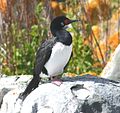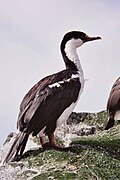Superregnum: Eukaryota
Cladus: Unikonta
Cladus: Opisthokonta
Cladus: Holozoa
Regnum: Animalia
Subregnum: Eumetazoa
Cladus: Bilateria
Cladus: Nephrozoa
Superphylum: Deuterostomia
Phylum: Chordata
Subphylum: Vertebrata
Infraphylum: Gnathostomata
Megaclassis: Osteichthyes
Cladus: Sarcopterygii
Cladus: Rhipidistia
Cladus: Tetrapodomorpha
Cladus: Eotetrapodiformes
Cladus: Elpistostegalia
Superclassis: Tetrapoda
Cladus: Reptiliomorpha
Cladus: Amniota
Classis: Reptilia
Cladus: Eureptilia
Cladus: Romeriida
Subclassis: Diapsida
Cladus: Sauria
Infraclassis: Archosauromorpha
Cladus: Crurotarsi
Divisio: Archosauria
Cladus: Avemetatarsalia
Cladus: Ornithodira
Subtaxon: Dinosauromorpha
Cladus: Dinosauriformes
Cladus: Dracohors
Cladus: Dinosauria
Cladus: Saurischia
Cladus: Eusaurischia
Subordo: Theropoda
Cladus: Neotheropoda
Cladus: Averostra
Cladus: Tetanurae
Cladus: Avetheropoda
Cladus: Coelurosauria
Cladus: Tyrannoraptora
Cladus: Maniraptoromorpha
Cladus: Maniraptoriformes
Cladus: Maniraptora
Cladus: Pennaraptora
Cladus: Paraves
Cladus: Eumaniraptora
Cladus: Avialae
Infraclassis: Aves
Cladus: Avebrevicauda
Cladus: Pygostylia
Cladus: Ornithothoraces
Cladus: Ornithuromorpha
Cladus: Carinatae
Parvclassis: Neornithes
Cohors: Neognathae
Cladus: Neoaves
Cladus: Aequornithes
Ordo: Suliformes
Familia: Phalacrocoracidae
Genus: Leucocarbo
Species: L. atriceps – L. bougainvillii – L. bransfieldensis – L. campbelli – L. carunculatus – L. chalconotus – L. colensoi – L. georgianus – L. melanogenis – L. nivalis – L. onslowi – L. purpurascens – L. ranfurlyi – L. verrucosus
Name
Leucocarbo Bonaparte, 1856
Typus: Carbo bougainvillii Lesson, 1837, = Leucocarbo bougainvillii
References
Bonaparte, C.L. 1856. Excursion dans les divers Museés d'Allemagne, de Hollande et de Belgique, et Tableaux paralléliques de l'ordre des Échassiers. Compte Rendu des Séances de l'Académie des Sciences 43: 410–421 BHL; Suite 571–579 BHL; Fin 593–601 BHL. Mallet-Bachelier. Paris. Reference page. p. 575
Vernacular names
English: Blue-eyed shags
Esperanto: Bluokulaj tufkormoranoj
español: Cormoranes de ojos azules
Leucocarbo is a genus of birds in the family Phalacrocoracidae. Several species within the genus are collectively known as blue-eyed shags. This is a group of closely related cormorant taxa. Many have a blue, purple or red ring around the eye (not a blue iris); other shared features are white underparts (at least in some individuals) and pink feet.[1]
They are found around the colder parts of the Southern Hemisphere, especially near southern South America, Antarctica, and New Zealand. Many are endemic to remote islands. Determining which types are species and which are subspecies of what larger species is problematic; various recent authorities have recognized from 8 to 14 species and have placed them in a variety of genera. The common names are even more confusing, "like myriad footprints criss-crossing in the snow and about as easy to disentangle." Only one common name is given for most species here.[1]
Taxonomy
The genus Leucocarbo was introduced in 1856 by the French naturalist Charles Lucien Bonaparte.[2] He did not specify a type species but this was designated as the guanay cormorant by William Ogilvie-Grant in 1898.[3][4] The name Leucocarbo combines the Ancient Greek leukos meaning "white" with the genus name Carbo introduced by Bernard Germain de Lacépède in 1799.[5]
A molecular phylogenetic study published in 2014 found that Leucocarbo is sister to the American cormorants in the genus Nannopterum; the genera split between 6.7 - 8.0 million years ago.[6]
The genus contains 16 species:[7]
| Image | Scientific name | Common Name | Distribution |
|---|---|---|---|
 |
Leucocarbo magellanicus | Rock shag or Magellanic cormorant | The coast of Argentina, Uruguay and southern Chile. |
 |
Leucocarbo bougainvillii | Guanay cormorant | The western coast of South America (Extirpated from Argentina). |
 |
Leucocarbo ranfurlyi | Bounty shag | Bounty Islands. |
 |
Leucocarbo carunculatus | New Zealand king shag, rough-faced shag or kawau | New Zealand. |
 |
Leucocarbo onslowi | Chatham shag | Chatham Islands. |
 |
Leucocarbo chalconotus | Otago shag | Eastern coast of New Zealand. |
 |
Leucocarbo stewarti | Foveaux shag | Stewart Island and the Foveaux Strait. |
 |
Leucocarbo colensoi | Auckland shag | Auckland Islands. |
 |
Leucocarbo campbelli | Campbell shag | Campbell Island. |
 |
Leucocarbo atriceps | Imperial shag or blue-eyed shag | Southern Chile and Argentina. |
 |
Leucocarbo georgianus | South Georgia shag | South Georgia and the Shag Rocks. |
 |
Leucocarbo melanogenis | Crozet shag | Crozet Island, Prince Edward Island and Marion Island. |
 |
Leucocarbo bransfieldensis | Antarctic shag | The Antarctic Peninsula, South Shetland Islands and Elephant Island. |
 |
Leucocarbo verrucosus | Kerguelen shag | Kerguelen Islands. |
| Leucocarbo nivalis | Heard Island shag | Heard and McDonald Islands. | |
 |
Leucocarbo purpurascens | Macquarie shag | Macquarie Island. |
References
Nelson, J. Bryan (2006). Pelicans, Cormorants, and Their Relatives: The Pelecaniformes. Oxford University Press, U.S.A. pp. 476–511, Plate 8. ISBN 978-0-19-857727-0.
Bonaparte, Charles Lucien (1856). "Excusion dans les divers Musées d'Allemagne, de Hollande et de Belgique, et tableaux paralléliques de l'ordre des échassiers (suite)". Comptes Rendus Hebdomadaires des Séances de l'Académie des Sciences (in French). 43: 571–579 [575].
Sharpe, R.B.; Ogilvie-Grant, W.R. (1898). Catalogue of the Plataleae, Herodiones, Steganopodes, Pygopodes, Alcae and Impennes in the collection of the British Museum. Catalogue of the Birds in the British Museum. Vol. 26. London: Trustees of the British Museum. p. 331.
Mayr, Ernst; Cottrell, G. William, eds. (1979). Check-List of Birds of the World. Vol. 1 (2nd ed.). Cambridge, Massachusetts: Museum of Comparative Zoology. p. 164.
Jobling, James A. (2010). The Helm Dictionary of Scientific Bird Names. London: Christopher Helm. p. 223. ISBN 978-1-4081-2501-4.
Kennedy, M.; Spencer, H.G. (2014). "Classification of the cormorants of the world". Molecular Phylogenetics and Evolution. 79: 249–257. doi:10.1016/j.ympev.2014.06.020. PMID 24994028.
Gill, Frank; Donsker, David, eds. (2019). "Hamerkop, Shoebill, pelicans, boobies, cormorants". World Bird List Version 9.1. International Ornithologists' Union. Retrieved 12 April 2019.
Retrieved from "http://en.wikipedia.org/"
All text is available under the terms of the GNU Free Documentation License

